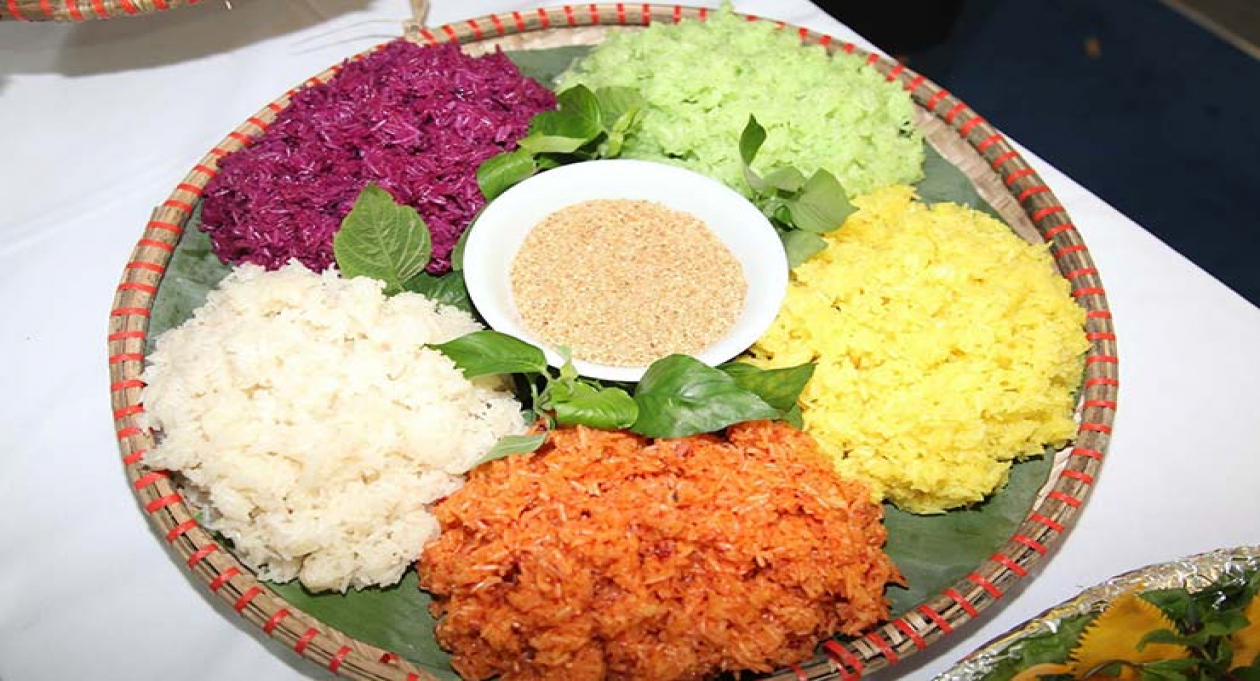There’s a saying: The food you eat can tell who you are. You can be easy going eaters, food picky eaters or adventurous ones, the sympathy for food is there. Food can be similar in shape, name and ingredients but the taste will be different, and so does Yen Bai. As one of the mountainous provinces in the north, diverse and beautiful natural sceneries of Mu Cang Chai, Khau Pha Pass, Ta Xua, Xuan Long Cave, Thac Ba Lake, Thuy Tien Cave,... have captured many visitors’ hearts. Travel to experience and admire the beauty of destinations and eat to taste the best of quintessence of the cuisine. You might found some of Yen Bai’s dishes are similar to other mountainous region in Vietnam, however, for sure, these similar specialties of Yen Bai are enough to awe you away, cus it not only carries cultural identity of the people but people’s, especially ethnic minorities’ efforts to introduce the image of charming and majestic Yen Bai.
Smoked buffalo meat
Vietnamese name: Thịt trâu gác bếp. Processed buffalo meat will be sifted on the smoking-shelf to smoke. It is put as no.1 in the list of Yen Bai’s specialties. It is also the traditional dish of Black Thai people in Nghia Lo, Yen Bai. To make the most delicious pieces of smoked buffalo meat, lean meat from buffaloes are chosen.
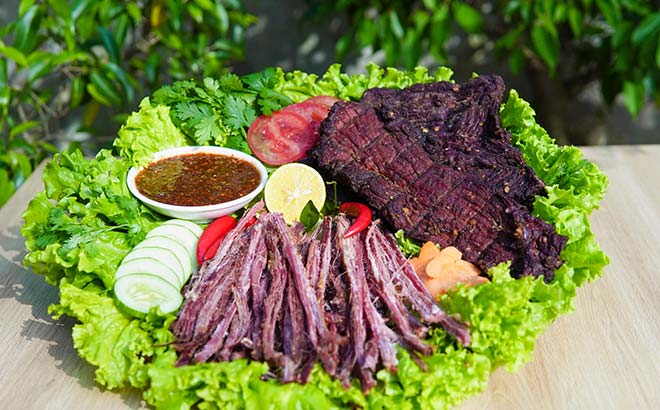
Buffalo meat often has its own distinctive smell so the process of marinating and seasoning are important, in order to get rid of the smell. Locals usually cut buffalo meat into long slabs and cure them with chilli, ginger and Mắc khén or ivy-rue, a type of forest pepper of the people of the Northwest, before hanging them up in the kitchen.
On winter days, there is nothing better than sitting by the fire and enjoying shredded smoked buffalo meat, the chewy, fleshy flesh of the meat that you may not find in any places but Yen Bai.
Five-colour sticky rice
This dish is made from a special sticky rice of Yen Bai, called Tu Le. Tu Le sticky rice is famous for its nostalgic fragrant and chewy flavour. The fluffy, whitey rice appear in every daily meal of Yen Bai family. Take a bite, the fragrance of newly harvested rice sits in your nose, coming along the chewy, soft texture and the light sweetness in your tongue, that’s what the taste of an essence of heaven made.
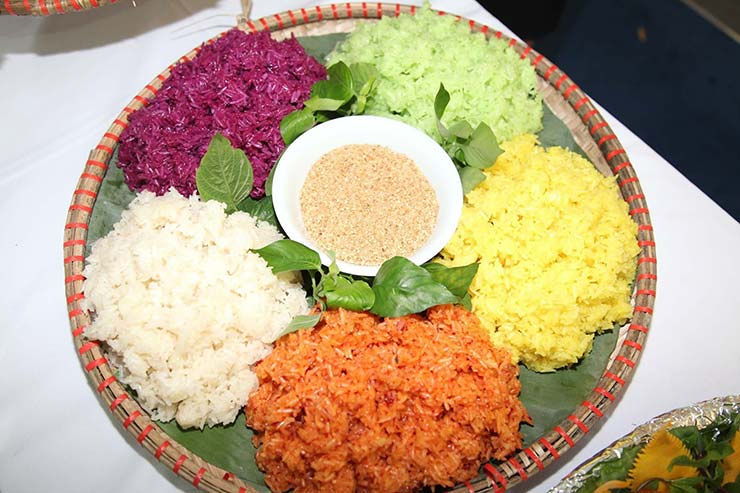
Along with the rice terraces, animal breeding is normally seen in this province of Vietnam. Pork, chicken and buffalo are allowed to wander around fields and villages. The meat of the animals is firm and fresh. It requires many processes to make Yen Bai sausages, from seasoning to baconing on a smoking-shelf, and fire needs to be under supervision.
Mountainous people often use firewood with essential oils such as cinnamon to heat the kitchen room, sausages will absorb and become more flavourful. Yen Bai sausages should be crunchy on the outside and soft with a smoky smell, a bit fat and peppery on the inside.
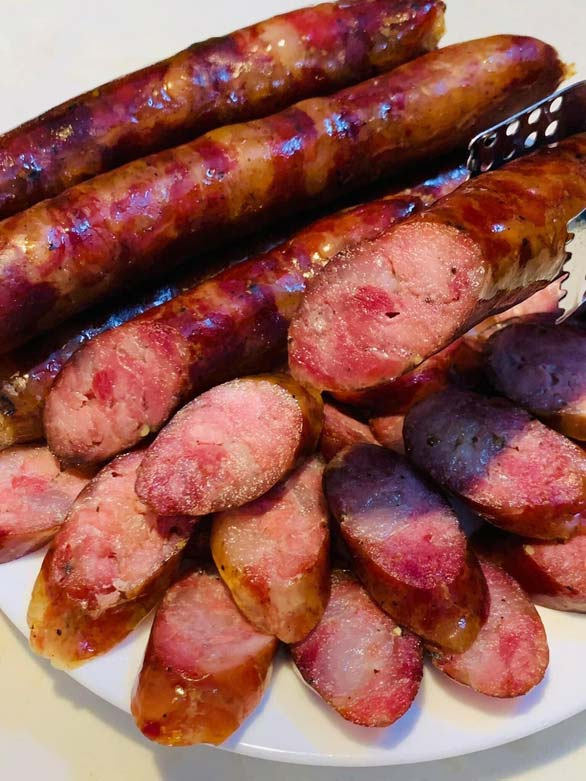
You read it right, it’s black chung cake, not the normal green one. The black colour of the cake comes from ash water, or water from the Semen Oroxyli tree (a wild long, flat tree growing in the forest of Yen Bai). Other ingredients include sticky rice, green beans and pork. Muong Lo Black Chung Cake is often in a rounded shape with chewy texture of Tu Le sticky rice, fatty pork meat and flavourful green beans and spices.
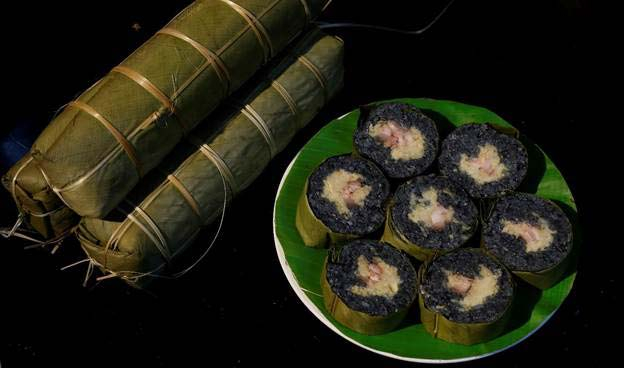
Bamboo shoots rolled with meat
Bamboo shoots belong to the bamboo family, with small stems without thorns. Grows in the forest or in the mountains. Every year, in December, when spring rains spread, from under the decaying leaves, bamboo shoots begin to sprout, revealing two tiny dark green ears. Due to the suitable soil, the bamboo shoots in Yen Bai are white in colour, soft yellow and taste better than other regions. You can find this specialty of Yen Bai in every corner of the mountainous markets to make many gourmets.
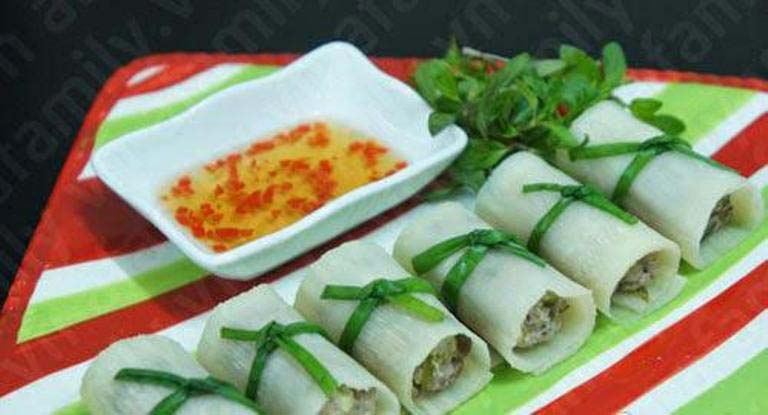
The popular dish of Bamboo shoots is rolled with meat. This dish is an old but gold food, simple but full of flavour. All you need is laksa leaves, an egg, pork belly and spices such as salt, Mononatri glutamat (MSG) and of course bamboo shoots,... Bamboo shoots need to be boiled in about three to five hours. The young leaves will be used to roll meats. The meat filling is often used with pork belly because it has both fat and lean. Minced laksa leaves, mix well with pureed meat and eggs, add a little salt. The autoclave will be lined with pork skin to add more flavour to the bamboo shoots. The delicious, delicate bamboo shoots roll meat is juicy and crunchy, what a worthy effort.
This moss is considered the delicacies of Muong Lo people since the moss season is short and edible moss is rare. Stream moss is mixed with many wild peppers, chilli, garlic, ginger, lemongrass, lemon leaves, and then added with some fatty meat. Use phrynium leaves to pack moss and spices and grill on charcoal. Muong Lo people often have it as salad or side dish with meat.
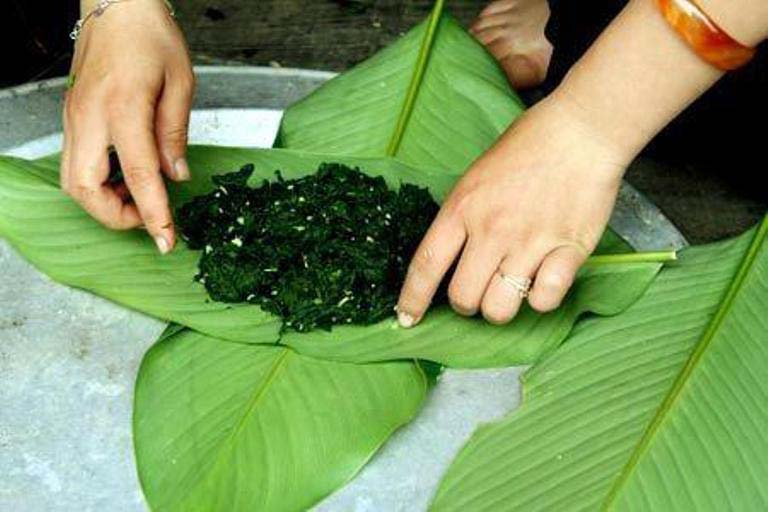
Mu Cang Chai ant egg sticky rice
You can find sticky rice in any place in Vietnam, however, each place has their own way to cook. If Kon Tum people have a unique sticky rice dish, people in the Northwest have impressive five-colour sticky rice. Moreover, the Tay, Dao, and Thai people in Yen Bai province have a rather strange combination of sticky rice and ant eggs with an extremely strange and delicious taste. The eggs are stretchy, soft and milky, with a characteristic aroma. Sticky rice with ant eggs is a great combination between the rich and seductive aroma of upland sticky rice with the sweet and greasy taste of ant eggs. Yet, some might find this dish a hard nut to crack.
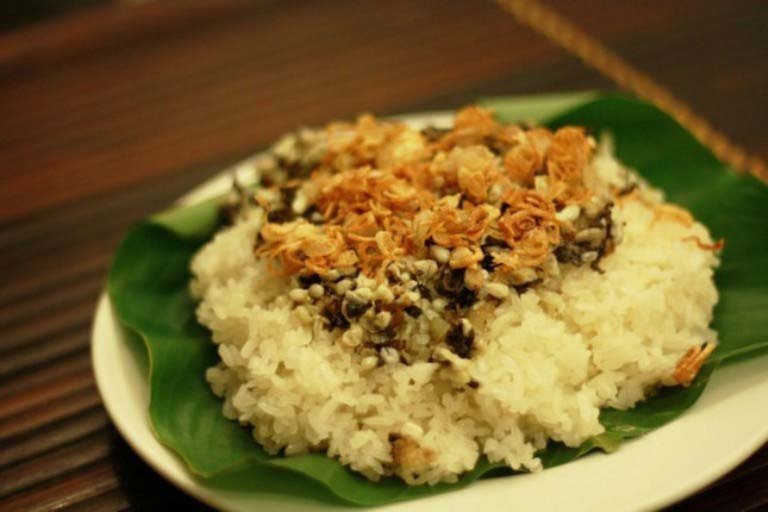
A proper way to enjoy sticky rice with ant eggs is to pick up the hot sticky rice with your hands, chew it and feel the popping sound of ant eggs.
Van Chan Longan honey
There is a famous honey in Van Chan, Yen Bai, called the Longan honey or longan flower forest honey. At the end of April, longan flowers bloom, covering the whole area. Fresh yellow longan flower honey, clear and faintly fragrant longan flower is a truly gift from nature of Yen Bai to bring home.
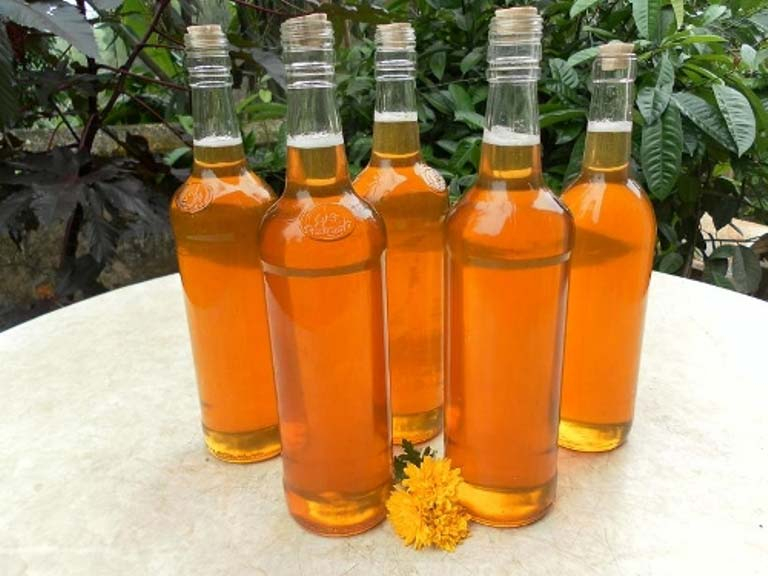
Snow tea in Suoi Giang
Mentioning Suoi Giang, images of immense tea trees will immediately pop up in travel lovers’ minds. Suoi Giang owns giant tea trees from 100 to more than 400 years old producing a famous Yen Bai specialty - Suoi Giang snow tea. This tea variety grows at an altitude of 1000m or more, so it is a crystal of the Northwest mountains. Tea buds and leaves are large, dark green colour, leaf surface covered with thin hairs. A cup of Suoi Giang snow tea carries characteristic aroma with rich taste and clear green-yellowish water colour.
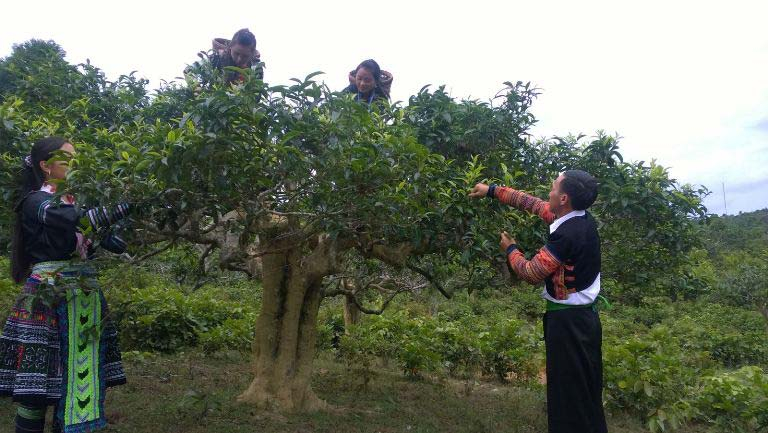
Other specialties of Yen Bai that visitors can give a try: Muong Lo shrimp paste; fried bugs and moths; Táo mèo wine - made from the eponymous wild apples (Docynia indica) that are harvested and then soaked and fermented in water before they are macerated in rice wine for several months.

